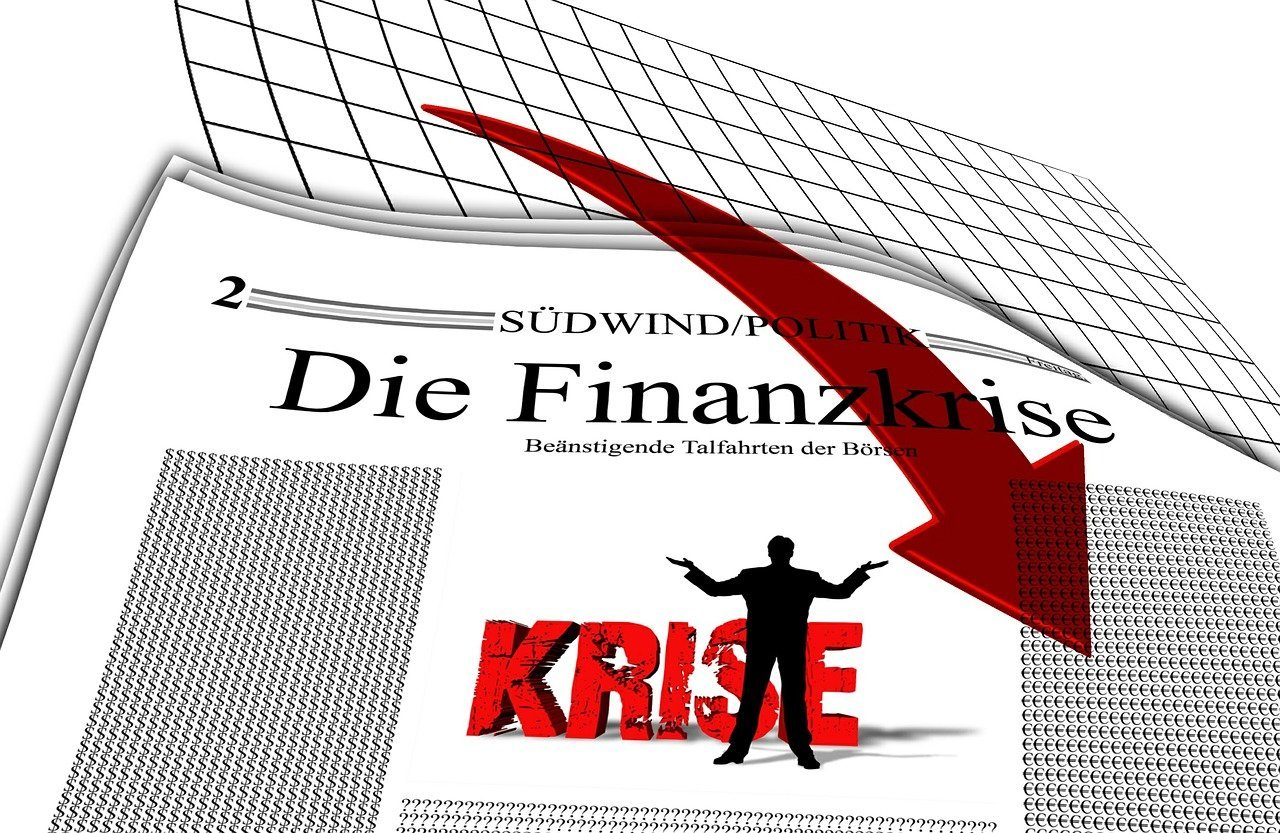Monetary Systems: Comparing Fiat Currency, Commodity Money, And Cryptocurrency
In this captivating article, you will explore the fascinating world of monetary systems and gain a deeper understanding of the differences between fiat currency, commodity money, and cryptocurrency. Get ready to embark on a journey that will unravel the intricacies of these three systems and shed light on their unique features and functions. Whether you’re a curious explorer or an aspiring economist, this article is your passport to mastering the complexities of monetary systems. So fasten your seatbelt and get ready to dive into the captivating realm of money!
Fiat Currency
Fiat currency refers to any currency that is issued by a government and is not backed by a physical commodity such as gold or silver. The value of fiat currency is derived from the trust and confidence placed in the government and its ability to maintain its value. One of the main characteristics of fiat currency is its legal tender status, meaning it must be accepted as a form of payment within the country it is issued.
Governments have control and regulate the creation and supply of fiat currency. This allows them to manage the money supply according to economic needs and control inflation. Central banks are responsible for issuing and managing fiat currency through various monetary policies such as setting interest rates, controlling money supply, and regulating banks. This control and regulation ensure stability and trust in the currency.
One of the key advantages of fiat currency is its ability to maintain stable value. Governments can implement policies and measures to stabilize the currency and control inflation. This stability is crucial for economic growth and facilitates trade and commerce within a country. Additionally, fiat currency provides a convenient medium of exchange for everyday transactions.
However, there are also certain drawbacks to fiat currency. As it is not backed by a physical commodity, the value of fiat currency is susceptible to fluctuations based on market perceptions and government policies. Economic downturns, political instability, or mismanagement of the money supply can lead to a decrease in the value of fiat currency. The reliance on government control and regulation also opens up the possibility of corruption and the misuse of power.
Commodity Money
Commodity money, on the other hand, is a form of currency that has intrinsic value and is based on a physical commodity. Historically, commodities such as gold, silver, and even salt have been used as money. The value of commodity money is directly tied to the value of the commodity it represents. This provides a tangible and universally recognized medium of exchange.
The historical use of commodity money dates back to ancient civilizations. Gold and silver, due to their scarcity and durability, became widely accepted as a medium of exchange. Trading goods and services with a universally recognized commodity facilitated economic transactions and allowed for the accumulation of wealth. However, the use of commodity money also presented certain challenges and limitations.
One of the main challenges of commodity money is the availability and supply of the physical commodity. The scarcity of commodities can lead to difficulties in maintaining a stable money supply and can result in uneven economic development. Furthermore, the value of commodity money can be subject to external factors such as changes in the global market or fluctuations in the supply and demand of the commodity.

Cryptocurrency
Cryptocurrency is a digital or virtual form of currency that utilizes cryptography for secure and decentralized transactions. Unlike fiat currency and commodity money, cryptocurrencies do not have a physical form and exist solely in digital platforms. They are based on blockchain technology, which is a distributed ledger that records all transactions and ensures transparency.
The decentralization aspect of cryptocurrencies is one of its defining characteristics. Instead of being controlled by a central authority or government, cryptocurrencies operate on a peer-to-peer network, allowing for direct transactions between individuals without the need for intermediaries. This decentralization provides greater autonomy and reduces the risk of government intervention or manipulation.
Volatility and speculation are often associated with cryptocurrencies. The value of cryptocurrencies can experience significant fluctuations due to market forces, investor sentiment, or regulatory changes. This volatility makes cryptocurrencies attractive for investment purposes but also increases the risk involved. Speculation in the cryptocurrency market can lead to price bubbles and sudden crashes, highlighting the inherent uncertainty in this form of currency.
One of the key advantages of cryptocurrencies is the enhanced security and anonymity they offer. The use of cryptographic algorithms ensures that transactions are secure and difficult to tamper with. Additionally, cryptocurrencies provide users with a certain level of anonymity, as transactions are recorded on the blockchain without revealing personal information.
However, there are also disadvantages to using cryptocurrencies. The decentralized nature of cryptocurrencies can pose challenges in terms of scalability and transaction speed. The verification process for transactions can be time-consuming, leading to delays in completing payments. Furthermore, the anonymous nature of cryptocurrencies has raised concerns regarding their use for illegal activities such as money laundering and terrorism financing.
Comparative Analysis
When comparing the three types of currency – fiat currency, commodity money, and cryptocurrency – several factors come into play.
- Medium of Exchange: Fiat currency is widely accepted as a medium of exchange for all transactions. Commodity money, although historically used, has limited acceptability in modern times. Cryptocurrencies are gaining acceptance but still have limited use for everyday transactions.
- Value Storage: While fiat currency can lose value due to inflation or government policies, it is still considered a reliable store of value. Commodity money, such as gold, has historically been seen as a safe haven for preserving wealth. Cryptocurrencies, on the other hand, are highly volatile and can experience significant value fluctuations.
- Unit of Account: Fiat currency serves as the standard unit of account in an economy, providing a common framework for pricing goods and services. Commodity money, due to the variations in value of the underlying commodity, is not as suitable for this role. Cryptocurrencies are still in the process of being widely accepted as a unit of account.
- Acceptability: Fiat currency is universally accepted as a form of payment within the country it is issued. Commodity money may have limited acceptability depending on the circumstances and location. Cryptocurrencies are still evolving in terms of acceptance, with some merchants and businesses starting to allow payments in certain cryptocurrencies.
- Government Influence: Fiat currency is influenced and regulated by the government through monetary policies. Commodity money is not subject to direct government control. Cryptocurrencies operate independently of government influence, but regulatory measures are being introduced in some jurisdictions.
- Transaction Speed: Fiat currency transactions can be conducted instantly, especially with the use of electronic payment systems. Commodity money transactions may require physical transfer and verification. Cryptocurrency transactions can vary in speed depending on the network congestion and the confirmation process.
- Transparency: Fiat currency transactions are recorded by banks and financial institutions, providing transparency and accountability. Commodity money transactions may lack transparency unless proper documentation and records are maintained. Cryptocurrency transactions are recorded on the blockchain, ensuring transparency and integrity.
- Security: Fiat currency transactions are generally secure, relying on trusted financial institutions for verification. Commodity money transactions may be prone to theft or counterfeiting if not properly secured. Cryptocurrency transactions utilize cryptographic algorithms for secure and tamper-proof transactions.
- Accessibility: Fiat currency is widely accessible through banks, ATMs, and financial institutions. Commodity money can be less accessible depending on the availability and cost of the underlying commodity. Cryptocurrencies require access to digital platforms and wallets, which may be limited in certain regions.

Future Prospects
In terms of future prospects, each form of currency has its own trajectory.
Fiat currency will continue to adapt to changing economic landscapes and technological advancements. With the rise of digital payments and the potential for central bank digital currencies, the way fiat currency is used and accessed may evolve. The challenge will be maintaining stability and trust in a rapidly changing financial landscape.
Commodity money may become less relevant as the global economy becomes more interconnected and reliant on digital forms of payment. The scarcity and limitations of physical commodities may make them less practical for everyday transactions. However, gold and other precious metals may still hold value as a diversification tool and medium of exchange in certain contexts.
Cryptocurrency is still in its early stages of evolution. The technology and infrastructure supporting cryptocurrencies are continuously improving, making them increasingly accessible and user-friendly. As regulatory frameworks develop and consumer adoption increases, cryptocurrencies may become more mainstream and integrated into traditional financial systems.
However, challenges and obstacles remain. The volatility and speculative nature of cryptocurrencies pose risks that need to be addressed. The scalability and transaction speed issues must be resolved to enable widespread adoption. Moreover, regulatory frameworks need to strike a balance between innovation and consumer protection to foster trust and stability.
In conclusion, each form of currency – fiat currency, commodity money, and cryptocurrency – has its own set of characteristics, advantages, and challenges. Fiat currency provides stability and convenience but is subject to government control and inflation. Commodity money has historical significance but faces limitations and challenges in the modern world. Cryptocurrency offers decentralization and security, but volatility and regulatory concerns remain. The future of currency will likely involve a combination of these forms, with continued adaptation, relevance, and evolution.
